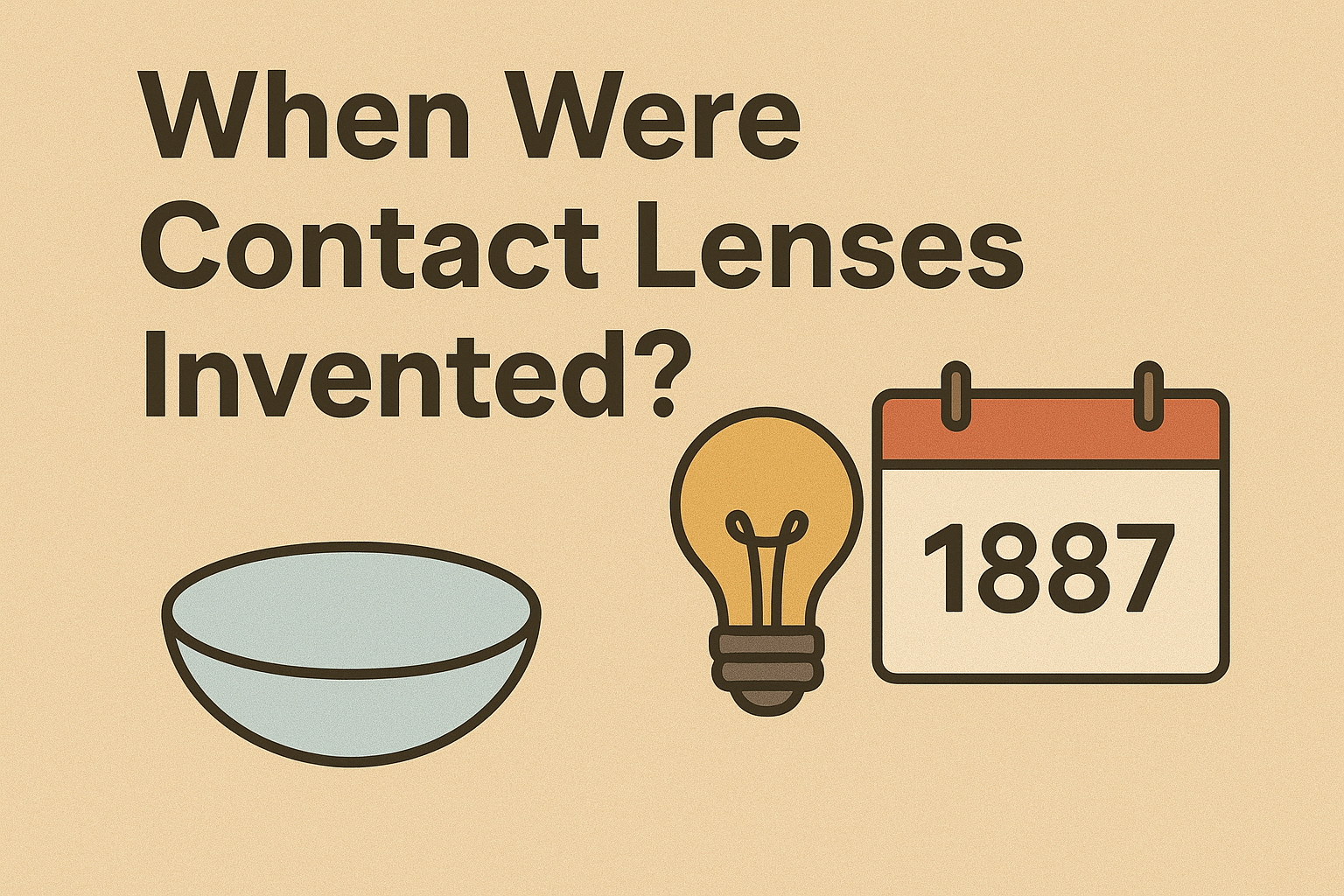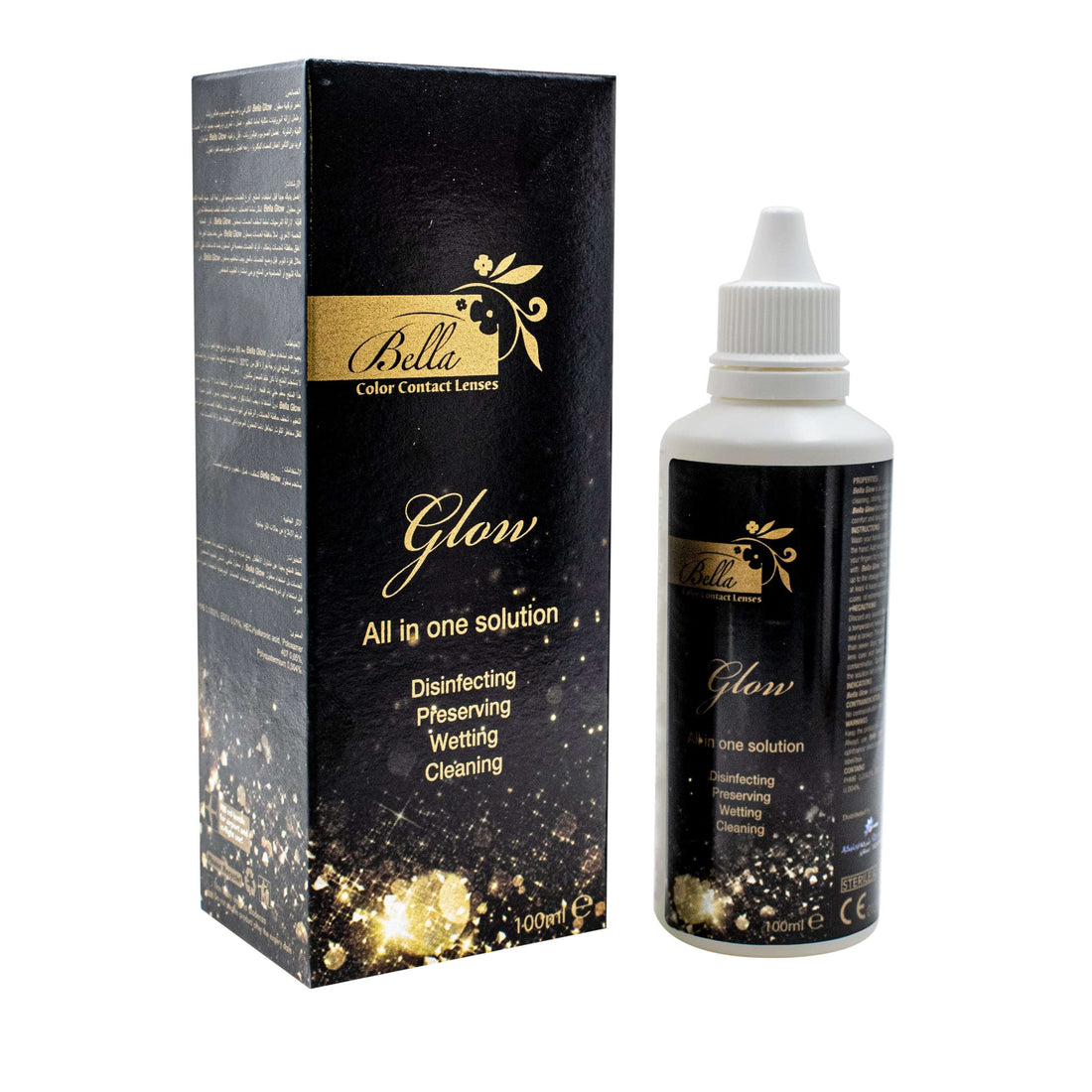Key Takeaway
Contact lenses have evolved from Leonardo da Vinci's 16th-century concepts to today's comfortable daily disposables. What began as large glass shells in 1888 has transformed into ultra-thin, breathable lenses made from advanced materials. Modern contact lenses available at Bella Lense represent over 130 years of continuous innovation in vision correction technology.
The history of contact lenses is far more fascinating and extensive than most people realize. While many assume contact lenses are a modern invention, their origins trace back centuries, involving brilliant minds, groundbreaking materials, and countless innovations that have revolutionized how we correct vision problems.
The Early Conceptual Origins of Contact Lenses
Leonardo da Vinci's Revolutionary Vision (1508)
The story of contact lenses begins with one of history's greatest innovators. In 1508, Leonardo da Vinci described the fundamental concept that would eventually become contact lenses in his "Codex of the Eye." Da Vinci theorized that vision could be altered by placing the eye in direct contact with water, essentially proposing the first concept of changing the eye's refractive properties through direct contact.
Da Vinci's sketches showed a person's face submerged in a glass bowl filled with water, demonstrating his understanding that vision could be modified through different mediums. While impractical, this concept laid the theoretical groundwork for what would eventually become contact lens technology.
René Descartes and the First Practical Design (1637)
French philosopher and mathematician René Descartes took da Vinci's concept further in 1637. Descartes proposed placing a liquid-filled glass tube directly against the eye to correct vision problems. His design included a tube that would rest against the cornea, filled with liquid to create the necessary refractive changes.
Though Descartes' design would have made blinking impossible and was entirely impractical for daily use, it represented the first genuine attempt to create a wearable vision correction device that made direct contact with the eye.
The Birth of Modern Contact Lenses
Adolf Fick's Groundbreaking Achievement (1888)
The year 1888 marks the official invention of the first contact lens that could actually be worn. German ophthalmologist Adolf Fick created the first successful contact lens, which was made from heavy brown glass. These early lenses were large, covering the entire visible portion of the eye, and could only be worn for a few hours due to their weight and the lack of oxygen permeability.
Fick's lenses were groundbreaking for several reasons:
-
They were the first to successfully correct vision through direct eye contact
-
They introduced the concept of custom fitting for individual eyes
-
They demonstrated that the human eye could tolerate a foreign object for extended periods
Early Glass Contact Lenses and Their Limitations
Following Fick's success, several other inventors and eye care professionals began experimenting with glass contact lenses. These early versions faced significant challenges:
Material Limitations:
-
Heavy weight caused discomfort and eye fatigue
-
No oxygen permeability led to corneal damage
-
Fragility made them dangerous if broken while wearing
-
Size and thickness limited wearing time to just a few hours
Manufacturing Challenges:
-
Each lens required individual crafting by skilled artisans
-
Fitting required extensive trial and error
-
Cost made them accessible only to wealthy patients
-
No standardization existed across different manufacturers
The Plastic Revolution in Contact Lenses
Kevin Tuohy's Plastic Innovation (1948)
The next major breakthrough came in 1948 when American optometrist Kevin Tuohy developed the first plastic contact lenses. Tuohy's innovation addressed many problems of glass lenses:
-
Lighter weight: Plastic lenses were significantly more comfortable
-
Improved durability: Less likely to shatter and cause eye injury
-
Better fitting: Could be molded more precisely to eye shape
-
Extended wear: Patients could wear them for longer periods
Tuohy's lenses were made from polymethyl methacrylate (PMMA), a clear, rigid plastic that became the standard material for contact lenses for the next several decades.
The Development of Corneal Lenses
Tuohy's design also introduced the concept of corneal lenses – smaller lenses that covered only the cornea rather than the entire visible eye. This innovation provided several advantages:
-
Reduced foreign body sensation
-
Improved comfort during blinking
-
Better tear circulation around the lens
-
More natural eye movement and function
The Soft Contact Lens Revolution
Otto Wichterle's Hydrogel Breakthrough (1959)
Czech chemist Otto Wichterle made perhaps the most significant advancement in contact lens history when he invented soft contact lenses in 1959. Working with his colleague Drahoslav Lím, Wichterle developed a water-absorbing plastic called hydrogel, specifically poly-hydroxyethyl methacrylate (pHEMA).
Revolutionary Properties of Hydrogel:
-
High water content (up to 38% in early versions)
-
Flexible and comfortable material
-
Better oxygen permeability than rigid plastics
-
More biocompatible with eye tissues
Wichterle's first soft contact lenses were created using a incredibly resourceful method – he used his wife's jewelry-making kit and a children's building set to create the first spin-casting machine for contact lens production.
Bausch & Lomb's Commercial Success
In 1971, Bausch & Lomb acquired the rights to Wichterle's soft contact lens technology and introduced the first commercially successful soft contact lenses in the United States. This marked the beginning of widespread contact lens adoption, as soft lenses offered:
-
Immediate comfort for new wearers
-
Reduced adaptation period
-
Lower risk of lens loss during physical activities
-
More forgiving fitting requirements
Modern Contact Lens Innovations
Daily Disposable Contact Lenses
The introduction of daily disposable contact lenses in the 1990s represented another revolutionary step. These lenses eliminated many hygiene and maintenance concerns while providing:
-
Ultimate convenience: No cleaning or storage required
-
Optimal hygiene: Fresh lens every day reduces infection risk
-
Consistent performance: No protein buildup or deposits
-
Travel-friendly: No need for solutions or cases
Today's daily disposable lenses available through retailers like Bella Lense represent the pinnacle of comfort and convenience in vision correction.
Silicone Hydrogel Technology
The development of silicone hydrogel materials in the late 1990s and early 2000s created contact lenses with unprecedented oxygen permeability. These advanced materials offer:
Superior Oxygen Transmission:
-
Up to 6 times more oxygen than traditional hydrogels
-
Reduced risk of corneal oxygen deprivation
-
Healthier long-term eye outcomes
-
Extended wearing schedules possible
Enhanced Comfort Features:
-
Improved moisture retention
-
Reduced end-of-day dryness
-
Better deposit resistance
-
More consistent vision throughout the day
Specialty Contact Lenses and Advanced Applications
Modern contact lens technology has expanded far beyond simple vision correction:
Therapeutic Applications:
-
Bandage lenses for corneal healing
-
Drug delivery systems
-
Protection for damaged corneas
-
Post-surgical recovery aids
Cosmetic and Enhancement Options:
-
Color-changing lenses for aesthetic purposes
-
Special effects lenses for entertainment
-
Enhanced natural color options
-
Corrective lenses for color blindness
The Science Behind Modern Contact Lens Materials
Understanding Hydrogel Chemistry
Modern contact lens materials represent sophisticated polymer chemistry designed specifically for eye compatibility. The key properties that make today's lenses comfortable and safe include:
Water Content Optimization:
-
Low water lenses (less than 50%) for durability
-
High water lenses (greater than 50%) for comfort
-
Balanced water content for specific wearing schedules
Surface Treatment Technologies:
-
Plasma treatment for improved wettability
-
Surface coatings to reduce protein deposits
-
Hydrophilic surface modifications for comfort
Biocompatible Material Design
Contemporary contact lenses are engineered to work harmoniously with the eye's natural physiology:
-
Ion permeability: Allows natural eye chemistry to function normally
-
Protein resistance: Reduces buildup that can cause discomfort
-
Tear film compatibility: Works with natural tear production
-
UV protection: Some lenses include UV-blocking capabilities
Manufacturing Evolution and Quality Control
From Hand-Crafted to Mass Production
The manufacturing of contact lenses has evolved from individual artisan crafting to sophisticated automated production:
Historical Manufacturing:
-
Individual glass blowing and grinding
-
Hand-fitting and adjustment required
-
Limited quality consistency
-
High cost per lens
Modern Production Methods:
-
Automated molding and casting
-
Computer-controlled quality testing
-
Sterile packaging and handling
-
Consistent, predictable results
Quality Assurance and Safety Standards
Today's contact lens manufacturing involves rigorous quality control measures:
-
FDA regulation and approval processes
-
Biocompatibility testing for all materials
-
Sterility assurance for all products
-
Dimensional accuracy verification
-
Optical quality testing
The Future of Contact Lens Technology
Smart Contact Lenses and Digital Integration
The next frontier in contact lens development involves integrating digital technology:
Emerging Technologies:
-
Glucose monitoring for diabetic patients
-
Intraocular pressure sensing for glaucoma management
-
Augmented reality displays
-
Medication delivery systems
Research and Development Focus:
-
Extended wear capabilities
-
Self-cleaning surfaces
-
Adaptive optics for perfect vision
-
Biointegrated materials
Sustainable and Environmentally Conscious Design
Future contact lens development increasingly focuses on environmental responsibility:
-
Biodegradable lens materials
-
Reduced packaging waste
-
Recycling programs for used lenses
-
Sustainable manufacturing processes
Frequently Asked Questions
When were the first contact lenses invented?
The first functional contact lenses were invented in 1888 by Adolf Fick, though the concept dates back to Leonardo da Vinci in 1508.
Who invented soft contact lenses?
Otto Wichterle, a Czech chemist, invented soft contact lenses in 1959 using hydrogel material.
How have contact lenses evolved over time?
Contact lenses have evolved from heavy glass shells to lightweight, breathable daily disposables with advanced materials like silicone hydrogel.
What materials are modern contact lenses made from?
Modern contact lenses are primarily made from hydrogel or silicone hydrogel materials designed for comfort, safety, and oxygen permeability.
Are daily disposable contact lenses better than reusable ones?
Daily disposables offer superior hygiene and convenience, while extended wear lenses can be more cost-effective for some users.
Conclusion: A Legacy of Innovation Continues
The invention and evolution of contact lenses represent one of the most remarkable success stories in medical device development. From Leonardo da Vinci's theoretical concepts to today's advanced daily disposables available at Bella Lense, contact lenses have continuously evolved to provide better vision correction, improved comfort, and enhanced quality of life for millions of people worldwide.
The journey from Adolf Fick's heavy glass lenses in 1888 to today's ultra-thin, breathable silicone hydrogel lenses demonstrates humanity's persistent drive to improve vision correction technology. Each breakthrough – from Tuohy's plastic lenses to Wichterle's soft hydrogels to modern daily disposables – has made contact lenses more accessible, comfortable, and safe for users.
As we look to the future, contact lens technology continues advancing with smart lenses, better materials, and more sustainable manufacturing processes. The basic principle that da Vinci envisioned over 500 years ago – correcting vision through direct eye contact – remains the foundation for innovations that will continue transforming how we see the world.
Whether you're considering contact lenses for the first time or looking to upgrade to newer technology, understanding this rich history helps appreciate the remarkable journey that has made today's comfortable, convenient contact lenses possible.






